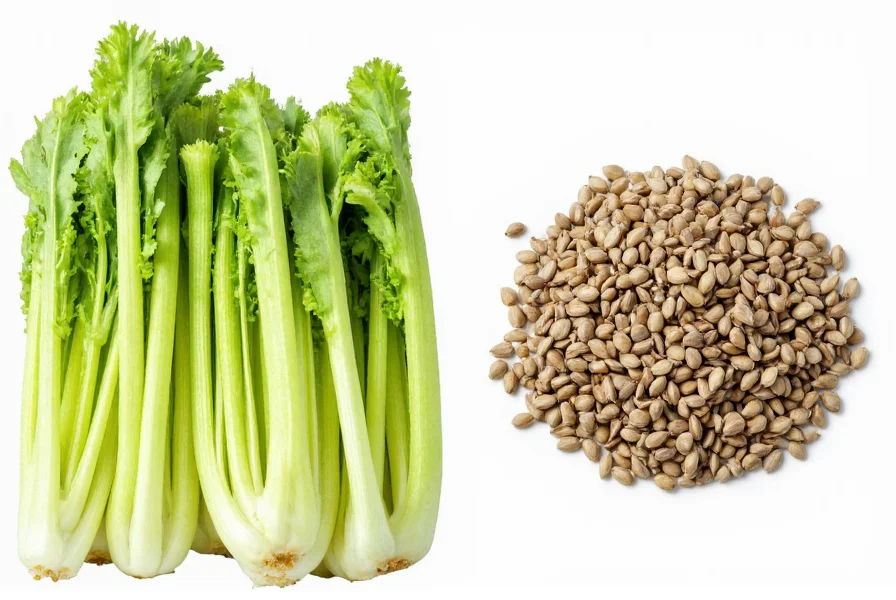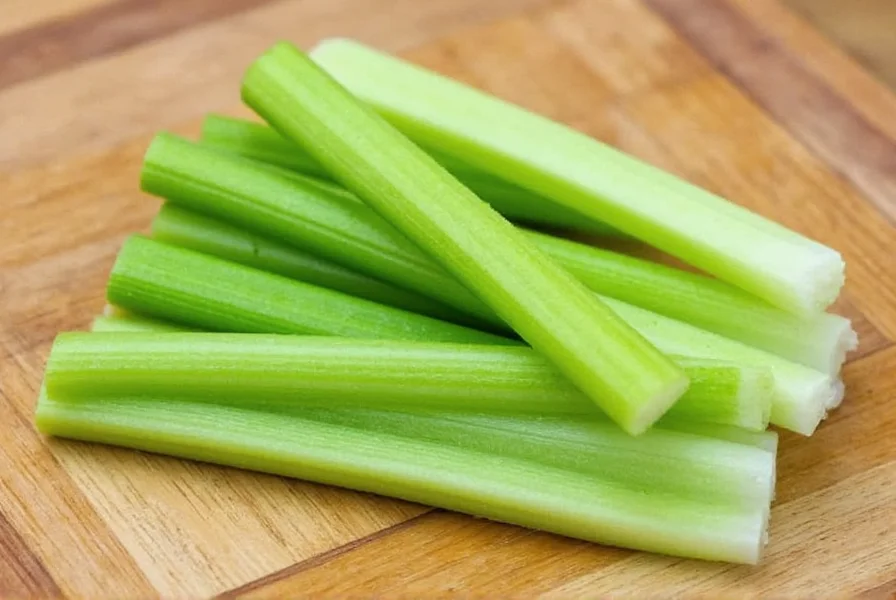Understanding the relationship between fresh celery and celery seed is essential for successful recipe adaptation. While both come from the same plant (Apium graveolens), they serve distinctly different culinary purposes that require thoughtful substitution approaches.
Flavor Profile Comparison
Before attempting substitutions, recognize the fundamental differences between these ingredients:
- Fresh celery: Mild, slightly salty flavor with high water content (95%) and distinctive crunch. Contains natural sodium but subtle herbal notes.
- Celery seed: Intensely concentrated flavor (up to 10x stronger), earthy with bitter undertones, and warm spice notes. Contains essential oils lost in fresh stalks.
The drying process concentrates certain compounds while diminishing others, creating a completely different culinary profile. This explains why direct 1:1 substitutions fail in most recipes.

When Substitution Works Best
Successful celery seed substitution depends on recipe type and cooking method:
- Dry rubs and spice blends: Celery seed excels here where fresh celery would add unwanted moisture
- Long-simmered dishes: Soups, stews, and braises allow time for seed flavors to mellow and integrate
- Dry baking applications: Bread doughs and cracker recipes where texture matters less
Substitutions typically fail in:
- Raw applications like salads and crudités
- Recipes relying on celery's crunch factor
- Dishes with short cooking times that don't mellow the seed's intensity
Practical Conversion Guidelines
Use this reference when substituting celery seed for fresh celery. Remember these are starting points requiring taste adjustment:
| Recipe Type | Celery Required | Celery Seed Equivalent | Additional Tips |
|---|---|---|---|
| Soups & Stews | 1 stalk | 1/4-1/2 tsp | Add early in cooking; pair with parsley to balance intensity |
| Salads (cooked) | 1 stalk | 1/8-1/4 tsp | Combine with lemon juice to mimic fresh flavor |
| Dry Rubs | N/A | 1/2-1 tsp | Use as primary celery flavor source |
| Raw Applications | 1 stalk | Not recommended | Consider fennel or cucumber instead |
Creative Substitution Strategies
For better results when replacing fresh celery, try these professional techniques:
- The Dilution Method: When substituting celery seed in liquid-based recipes, start with 1/8 teaspoon per stalk called for, then adjust after 20 minutes of cooking.
- Flavor Layering: Combine small amounts of celery seed (1/8 tsp) with complementary ingredients like parsley (1 tsp) and lemon zest (1/4 tsp) to recreate fresh celery's complexity.
- Texture Compensation: In dishes where crunch matters, add jicama or water chestnuts when using celery seed for flavor.
- Seed Infusion: For subtle flavor, toast seeds lightly then steep in warm broth for 10 minutes before straining.
Common Substitution Mistakes
Avoid these frequent errors when attempting celery seed substitutions:
- Equal volume substitution: Using 1 stalk's volume of seed creates overpowering, bitter results
- Adding late in cooking: Celery seed needs time to mellow; add at least 20 minutes before serving
- Ignoring recipe moisture balance: Replacing 2+ stalks with seed may require reducing other liquids
- Not tasting as you go: Seed intensity varies by brand and freshness; adjust incrementally
Alternative Ingredients When Substitution Fails
When celery seed simply won't work, consider these alternatives based on recipe needs:
- For flavor only: Lovage (1:1), dill seed (1:1.5), or fennel seed (1:2 with lemon)
- For crunch only: Jicama, cucumber, or bok choy stems
- For sodium content: A pinch of celery salt (reduce other salt accordingly)
- For vegetable base: Carrot and onion combination in equal parts
Professional chefs often combine approaches - using minimal celery seed for authentic flavor while incorporating other ingredients to replicate texture and balance.
Storage and Freshness Considerations
The effectiveness of substitutions depends significantly on ingredient freshness:
- Fresh celery loses crispness after 1-2 weeks; older celery has milder flavor requiring less seed substitution
- Celery seed maintains potency for 1-2 years; older seeds require slightly more volume
- Toast older seeds lightly to revive flavor before use
- Store celery seed in airtight container away from light and heat
FAQ
Can I use celery salt instead of celery seed in recipes?
Yes, but adjust carefully. Celery salt is typically 3 parts salt to 1 part celery seed. Use 3/4 teaspoon celery salt per 1/4 teaspoon celery seed required, and reduce other salt in the recipe by 1/4 teaspoon.
Why does my substitution make food taste bitter?
Celery seed contains compounds that taste bitter when used in excess. This happens when substituting equal volumes rather than using the proper 1:4-5 ratio. Reduce the amount by half, add acid (lemon juice or vinegar), and include complementary herbs like parsley to balance the flavor.
How do I substitute fresh celery for celery seed in a recipe?
Use 4-5 stalks of chopped celery per 1 teaspoon of celery seed. Since fresh celery contains water, reduce other liquids by 2-3 tablespoons. Add the celery early in cooking to allow flavors to concentrate, and consider adding a small pinch of celery seed (1/8 tsp) for authentic flavor depth.
Does celery seed have the same nutritional value as fresh celery?
No, the nutritional profiles differ significantly. Celery seed is more concentrated in certain compounds like apiol and has higher sodium content by volume, but lacks the hydration and fiber of fresh celery. One teaspoon of celery seed contains about 7 calories versus 6 calories per stalk of fresh celery, but with different vitamin and mineral concentrations.











 浙公网安备
33010002000092号
浙公网安备
33010002000092号 浙B2-20120091-4
浙B2-20120091-4